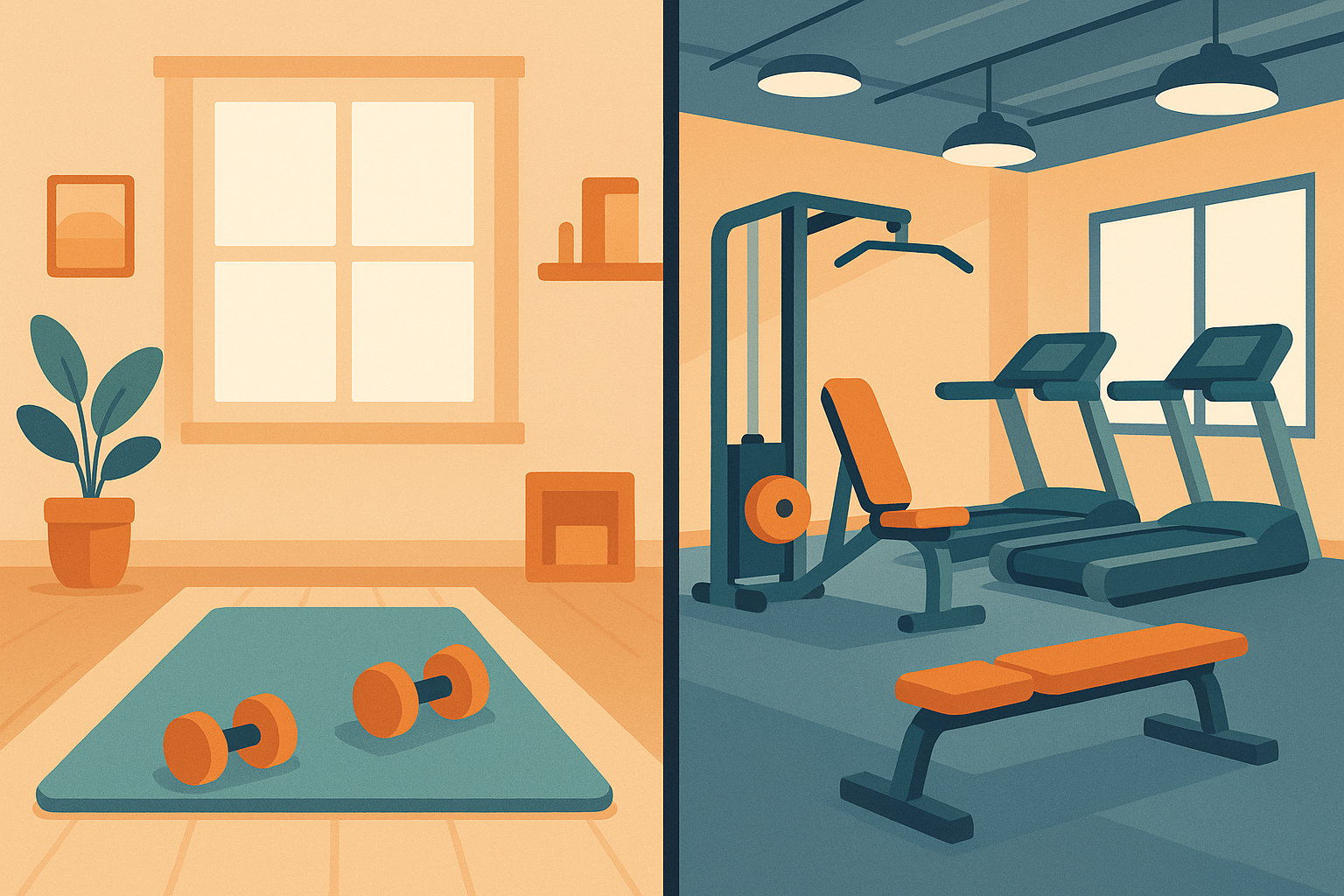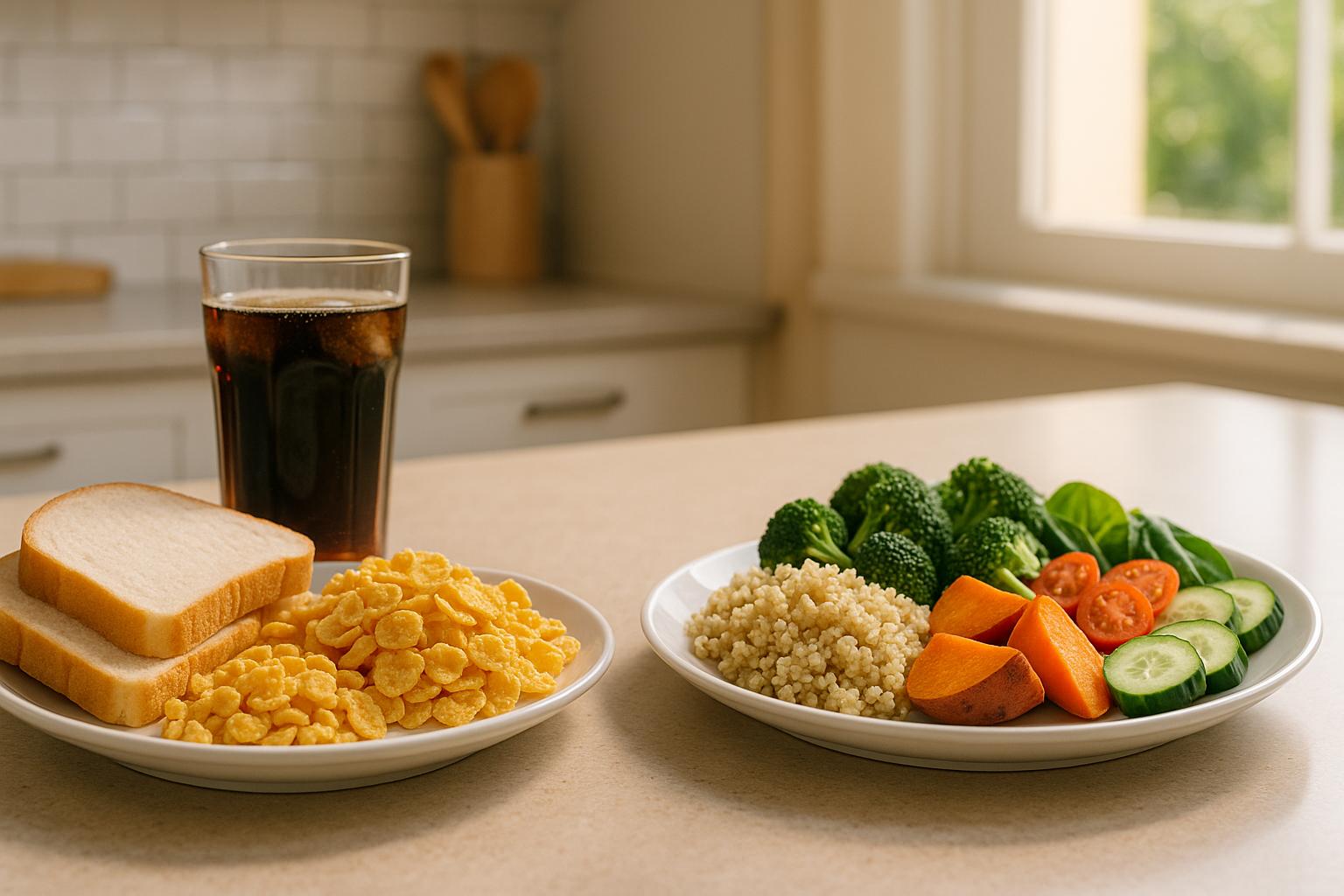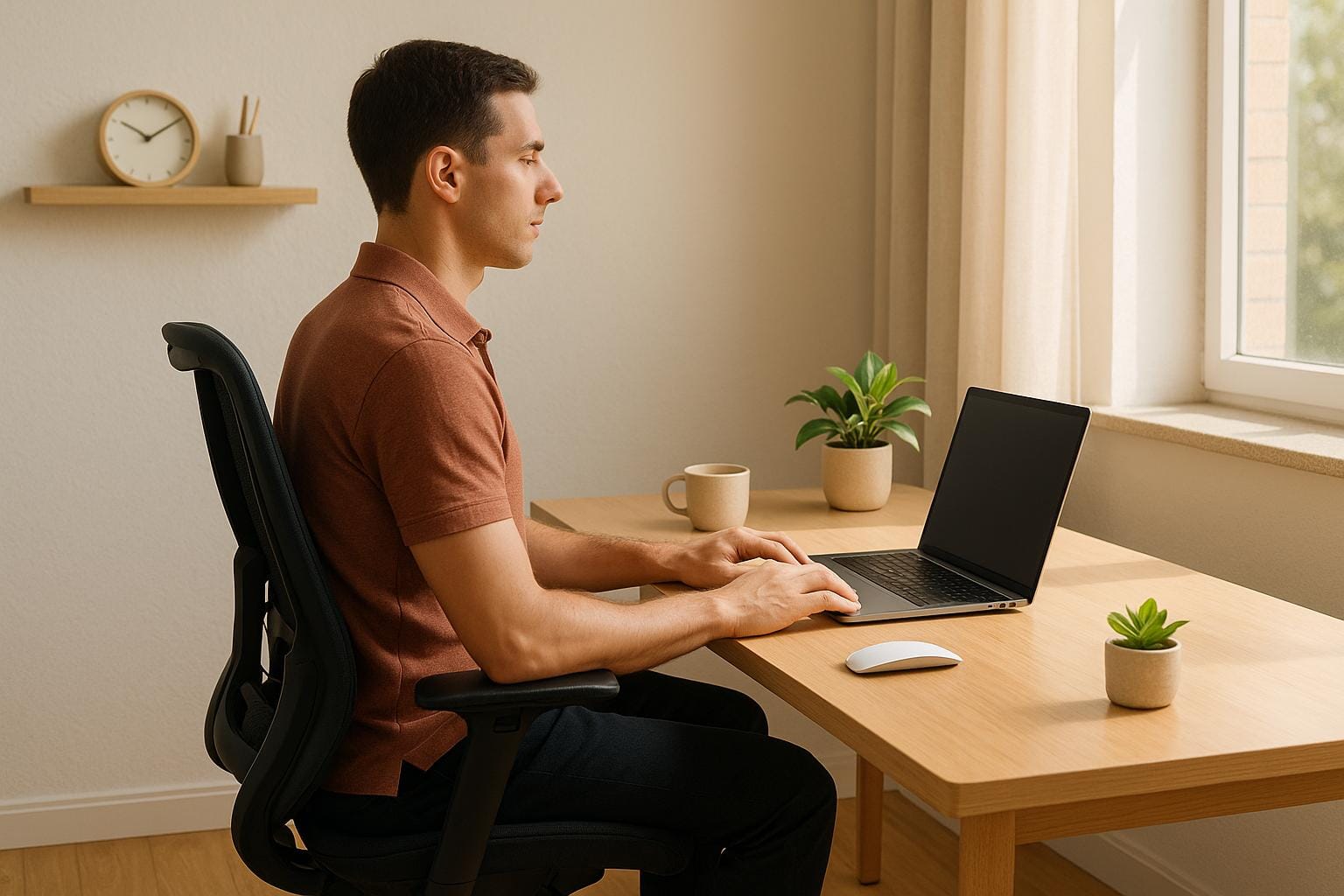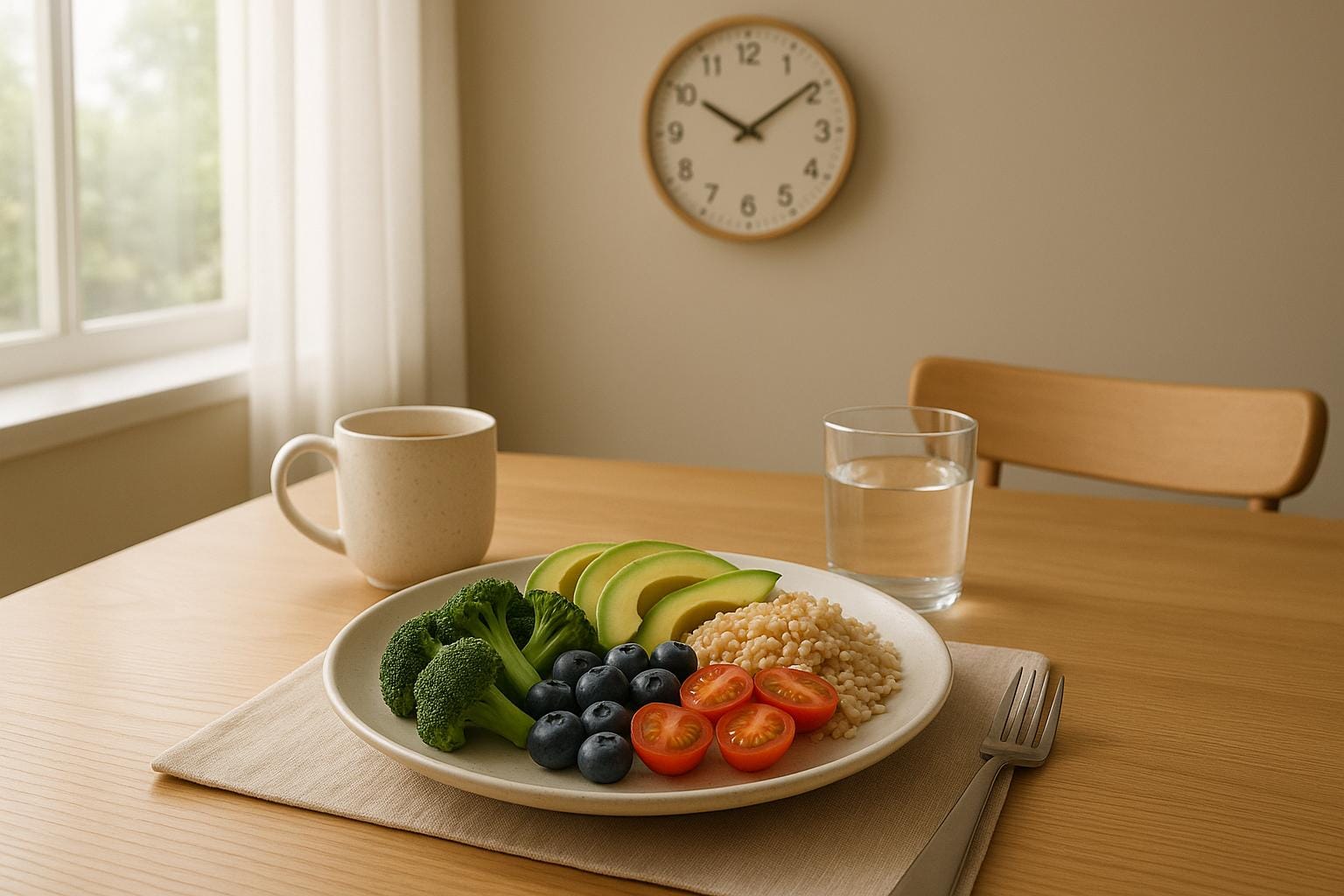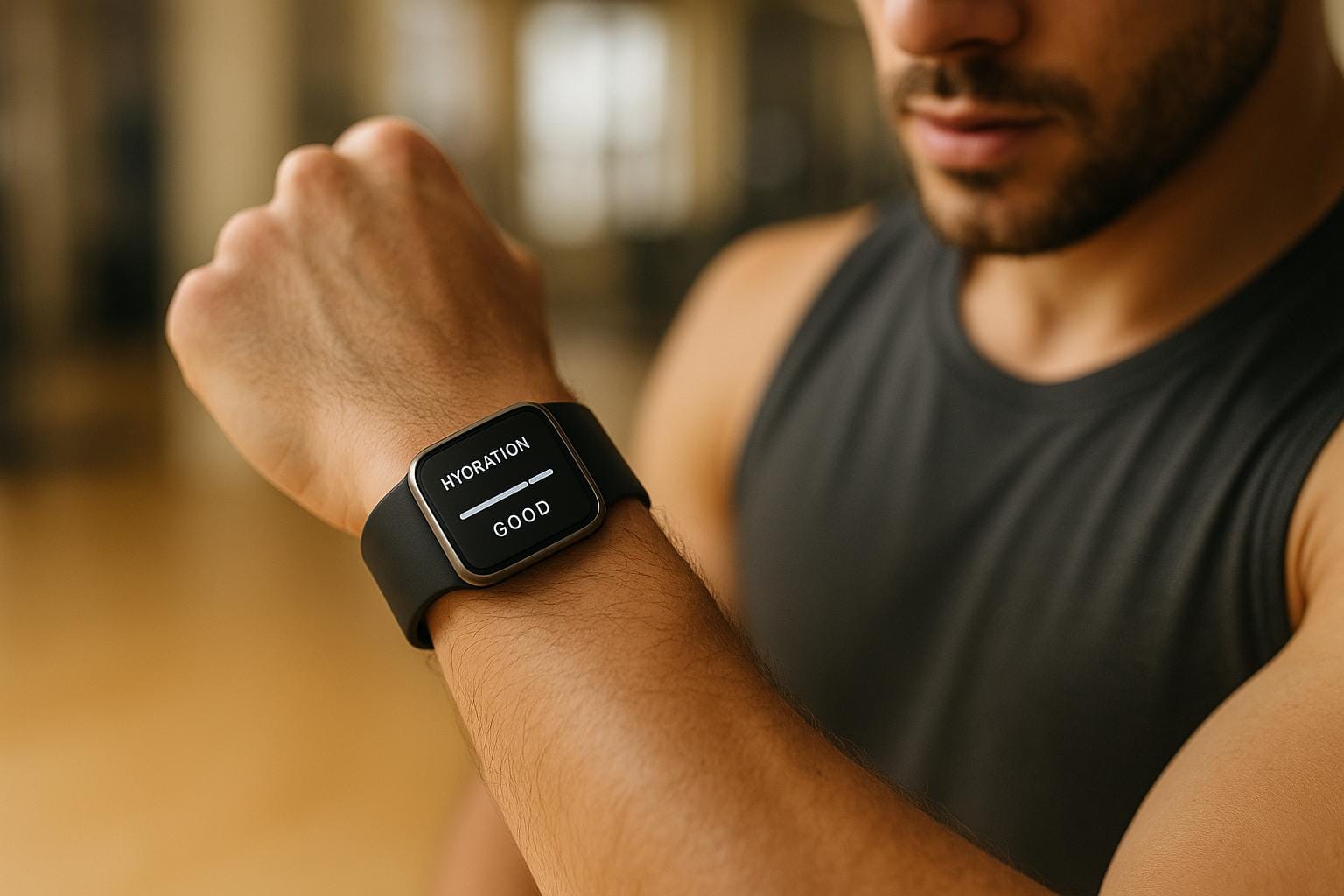Quick Takeaway:
Choosing between home and gym workouts depends on your goals, budget, and lifestyle. Home workouts offer convenience and privacy, while gyms provide access to professional equipment and social motivation. Both can help you achieve results with consistency.
Key Differences at a Glance:
- Cost: Home workouts can save money long-term with an initial equipment investment. Gyms average $58/month.
- Convenience: Home workouts are 24/7, no travel required. Gyms need scheduling and commuting.
- Equipment: Gyms have more variety; home setups are limited unless heavily invested.
- Motivation: Gyms provide social energy; home workouts need self-discipline.
Quick Comparison Table:
| Factor | Home Workouts | Gym Workouts |
|---|---|---|
| Initial Cost | $0–$2,000+ (equipment) | $0–$100 enrollment fee |
| Ongoing Cost | Minimal | $58/month (average) |
| Convenience | 24/7 access, no travel | Requires commute |
| Equipment | Limited | Wide variety |
| Privacy | Full control | Shared environment |
| Social Interaction | Minimal | High opportunity |
| Professional Guidance | Limited (virtual) | On-site trainers available |
Pro Tip: Combine both options! Use home workouts for quick sessions or flexibility training, and hit the gym for strength-building and classes. The key is consistency - stick to a routine that works for you.
Home and Gym Workouts Explained
What Are Home Workouts
A basic home workout setup requires just a few essentials: a yoga mat, dumbbells, and resistance bands.
If you want to take it up a notch, you can invest in items like adjustable weight benches, pull-up bars, rowing machines, or stationary bikes. The beauty of home workouts lies in their flexibility. You can easily turn an empty room, garage, or even a small corner of your home into a personal workout space. Even with limited room, bodyweight exercises and compact equipment can do the job.
Now, let’s take a closer look at what gym workouts bring to the table.
What Are Gym Workouts
Gyms offer a structured space designed for more intensive training. They provide access to professional-grade equipment, multiple exercise stations, and expert guidance.
Here’s what you can expect from most gyms:
- High-quality cardio machines
- A full range of free weights
- Specialized strength training tools
- Group fitness classes
- Access to personal trainers
"Classes offer companionship, a chance to learn proper technique, and opportunities to challenge your body and sample new trends." - Harvard Health
Gyms also provide opportunities to work with trainers, whether through weekly sessions, small group training, or even short-term programs to refresh your routine.
"Often personal trainers are available for weekly appointments, small group training sessions, or a short-term overhaul to freshen your routine." - Harvard Health
Meeting Different Fitness Goals
How do home and gym workouts stack up when it comes to fitness goals? Here’s a quick comparison:
| Fitness Goal | Home Workout Suitability | Gym Workout Suitability |
|---|---|---|
| Muscle Building | Good for moderate gains with proper equipment | Excellent – wide variety of free weights |
| Weight Loss | Very effective with bodyweight exercises | Effective with diverse cardio options |
| Flexibility | Great for yoga and stretching | Good with dedicated studio spaces |
| General Fitness | Suitable with basic equipment | Ideal with a full range of equipment |
"In the end, the choice is yours. If your goal is building muscle mass, the gym offers the greatest selection of free weights to help get you there. If you are after a more lean and toned look, home-based training can provide what you need. Both the home and gym environments can produce the results you want, depending on what your goals are, to help take your fitness to the next level." - MO Marketplace
Both options can deliver results, as long as you stick to a consistent and well-planned routine.
This article is for informational purposes only and is not intended as medical advice. Please consult a healthcare professional before starting any new fitness or wellness routine.
Pros and Cons Analysis
Side-by-Side Comparison
Here’s a breakdown of how home and gym workouts stack up against each other, helping you decide what fits your lifestyle and goals.
| Factor | Home Workouts | Gym Workouts |
|---|---|---|
| Initial Cost | $0-$2,000+ for equipment | $0-$100 enrollment fee |
| Ongoing Cost | Minimal maintenance | Average $58/month |
| Convenience | 24/7 access, no travel | Limited hours, travel needed |
| Equipment | Limited unless heavily invested | Wide variety available |
| Space Requirements | Dedicated area needed | None |
| Privacy | Full control | Shared environment |
| Professional Guidance | Limited unless virtual | On-site trainers available |
| Social Interaction | Minimal | High opportunity |
| Motivation Factors | Self-driven | Community-driven |
| Cleanliness | Fully controlled by you | Shared equipment |
Understanding the Differences
The table highlights the primary differences, but let’s dive deeper into how these factors influence your fitness journey.
Cost is a major factor. Home workouts can save money in the long run. Tim Kessler, Co-founder of GymPerson.com, explains:
"Home Gym is the winner, particularly calculating costs over several years. Taking the average commercial gym yearly membership cost of $700, multiplied by four years, that could reach $2,800."
Your workout environment and motivation also play a huge role. At home, you have privacy and convenience, but staying motivated can be tough. Gyms, on the other hand, provide a structured atmosphere where being surrounded by others often pushes you to work harder.
Equipment and cleanliness are another consideration. Gyms offer a wide range of professional-grade equipment, but studies show that 28% of gym surfaces may carry harmful bacteria. At home, you’ll need to get creative with limited equipment, but you have full control over cleanliness.
Finally, time management is key. Home workouts save you travel time and fit easily into a packed schedule. Gym visits require planning around operating hours and potential crowds, but they offer a distraction-free space dedicated to fitness.
Ultimately, choose the setting that aligns with your fitness goals - whether that’s strength training, weight loss, or improving flexibility - and matches your daily routine.
This article is for informational purposes only and not intended as medical advice. Always consult a healthcare professional before starting a new fitness or wellness routine.
Tips for Better Results
Getting the Most from Home Workouts
You don’t need a fancy gym setup to get in a great workout at home. A simple 6×6 ft space is enough for most exercises - just make sure the area is well-ventilated and free of obstacles.
For workouts without equipment, focus on moves that target multiple muscle groups at once, such as:
- Bodyweight squats
- Push-ups
- Lunges
- Mountain climbers
- Planks
If you’re ready to add equipment, invest in items that are both versatile and budget-friendly. Here are some great options:
| Equipment | Approximate Cost | Benefits |
|---|---|---|
| Resistance bands | $15–30 | Lightweight and portable; ideal for strength training and flexibility |
| Adjustable dumbbells | $200–300 | Compact and space-saving; multiple weight options in one set |
| Exercise mat | $20–40 | Adds comfort and joint protection for floor-based exercises |
| Pull-up bar | $25–50 | Perfect for upper-body strength; door-mounted options available |
A well-planned home setup can make workouts more convenient, but if you’re heading to the gym, a little planning can go a long way there too.
Making Gym Time Count
Make the most of your gym visits by planning ahead and taking advantage of the variety gyms offer, from equipment to fitness classes. Mixing up your workouts can keep things interesting and help you target different fitness goals.
Here’s how to maximize your gym sessions:
- Choose the right time: Avoid peak hours (typically 5–8 PM). Mid-mornings (10 AM–2 PM) or late evenings (after 8 PM) are usually quieter.
- Get professional help: Many gyms offer free sessions with trainers to teach proper form and technique.
- Try new classes: Explore specialized fitness classes to add variety and challenge to your routine.
Whether you’re working out at home or the gym, consistency is what truly delivers results.
Staying on Track
Sticking to a routine is critical for long-term success. Here’s how to stay consistent:
- Set realistic goals: Break big goals into smaller steps and track your progress with a journal or fitness app.
- Mix it up: Alternate between home and gym workouts to keep things interesting.
- Stay accountable: Share your goals with friends or join online fitness groups for support and motivation.
Keep in mind, progress isn’t always a straight line. Focus on creating habits that you can maintain over time. If you feel your motivation slipping, switch up your routine to keep it engaging and challenging.
This article is for informational purposes only and does not substitute for medical advice. Always consult a healthcare professional before starting any fitness or wellness program.
Making Your Choice
What to Think About
Deciding between working out at home or hitting the gym comes down to a few key factors that can shape your fitness experience. Here’s a quick breakdown:
| Factor | Home Workouts | Gym Workouts |
|---|---|---|
| Cost | One-time equipment investment; minimal ongoing costs | Monthly fees (starting at $25) plus travel expenses |
| Time | No travel required; instant access | Commute time; possible wait for equipment |
| Space | Requires a dedicated workout area | No personal space concerns |
| Environment | Full control over your surroundings | Shared space with varying conditions |
Your personality also plays a big role in your decision. According to fitness experts:
"If you thrive on social interaction, the gym may be the ideal choice. If you are an introvert that values private time, home base may provide the right atmosphere for significant improvements."
– MO Marketplace
Weigh these factors carefully to find the setting that fits your lifestyle and fitness goals.
Matching Goals to Settings
Your fitness goals can help guide your choice of workout environment:
Gyms are ideal for:
- Access to a variety of free weights
- Professional trainers and guidance
- Having a spotter for safety
- Progressive overload with advanced equipment
Home workouts shine for:
- Bodyweight exercises
- Resistance band training
- High-Intensity Interval Training (HIIT)
- Flexibility and mobility work
Choose the space that supports your specific goals, or even better, consider blending both options for a balanced approach.
Using Both Options
Why not leverage the best of both worlds? Combining home and gym workouts can keep things fresh and help you stay motivated.
Home workouts are perfect for:
- Quick morning sessions
- Recovery and stretching routines
- Flexibility exercises
- Days when you’re short on time
Gym sessions work well for:
- Heavy lifting or strength-focused days
- Group fitness classes for variety and fun
- Using specialized equipment
- Staying motivated through social interaction
The key is finding a routine that aligns with your schedule, preferences, and goals - while keeping you consistent and excited about your fitness journey.
This article is for informational purposes only and is not intended as medical advice. Please consult a healthcare professional before starting any new fitness or wellness routine.
GYM WORKOUTS VS. HOME WORKOUTS- WHAT IS BETTER?
Summary
Pick a workout environment that aligns with your lifestyle, preferences, and fitness goals. The success of your routine often depends on key factors like these:
| Factor | Home Workouts | Gym Workouts |
|---|---|---|
| Equipment Access | Limited but customizable | Wide range of options available |
| Learning Curve | Requires self-teaching | Access to professional guidance |
| Motivation | Great for those who value privacy | Ideal for those energized by a social setting |
Each setting offers unique advantages. Home workouts encourage creativity and convenience, while gyms provide access to more equipment and expert advice.
A combined approach can be especially effective. For example, you might use the gym for strength training and rely on home workouts for flexibility or cardio. Tailor your routine to match your needs for the best results.
This article is for informational purposes only and is not a substitute for professional medical advice. Always consult a healthcare provider before starting a new fitness routine.
FAQs
How can I stay motivated to exercise at home without the social atmosphere of a gym?
Staying motivated for home workouts without the social vibe of a gym can be challenging, but it’s absolutely doable with the right mindset and strategies. Start by setting clear fitness goals and reminding yourself why you started. Tracking your progress, whether through a fitness app or a simple journal, can also help you stay on track and celebrate small wins.
To recreate a sense of connection, consider working out with friends or family virtually or in person. You can even join online fitness communities or live workout classes for accountability and encouragement. Lastly, keep your workouts enjoyable by mixing up routines, trying new exercises, or creating a playlist of your favorite upbeat songs to keep you energized and engaged.
What are some affordable equipment options to create a flexible home workout space?
Setting up a versatile home gym doesn’t have to break the bank. Some affordable and space-saving equipment options include resistance bands, yoga mats, and kettlebells. These are great for strength training, flexibility, and overall conditioning.
You can also consider a jump rope for cardio, a medicine ball for dynamic exercises, and a stability ball to enhance core workouts. These items are budget-friendly, easy to store, and offer a variety of ways to keep your fitness routine effective and engaging.
How can I effectively combine home and gym workouts to achieve my fitness goals?
Combining home and gym workouts is a great way to get the best of both worlds and achieve well-rounded fitness results. Gyms provide access to specialized equipment and group classes, making them ideal for strength training, cardio, or trying new activities. On the other hand, home workouts offer unmatched convenience and flexibility, perfect for busy days or when you prefer a more private setting.
To maximize your results, consider using the gym for exercises that require heavy equipment, like weightlifting or machines, and save home workouts for bodyweight exercises, yoga, or quick sessions when time is tight. By alternating between the two, you can create a balanced routine that fits your schedule and keeps your workouts engaging and effective.


